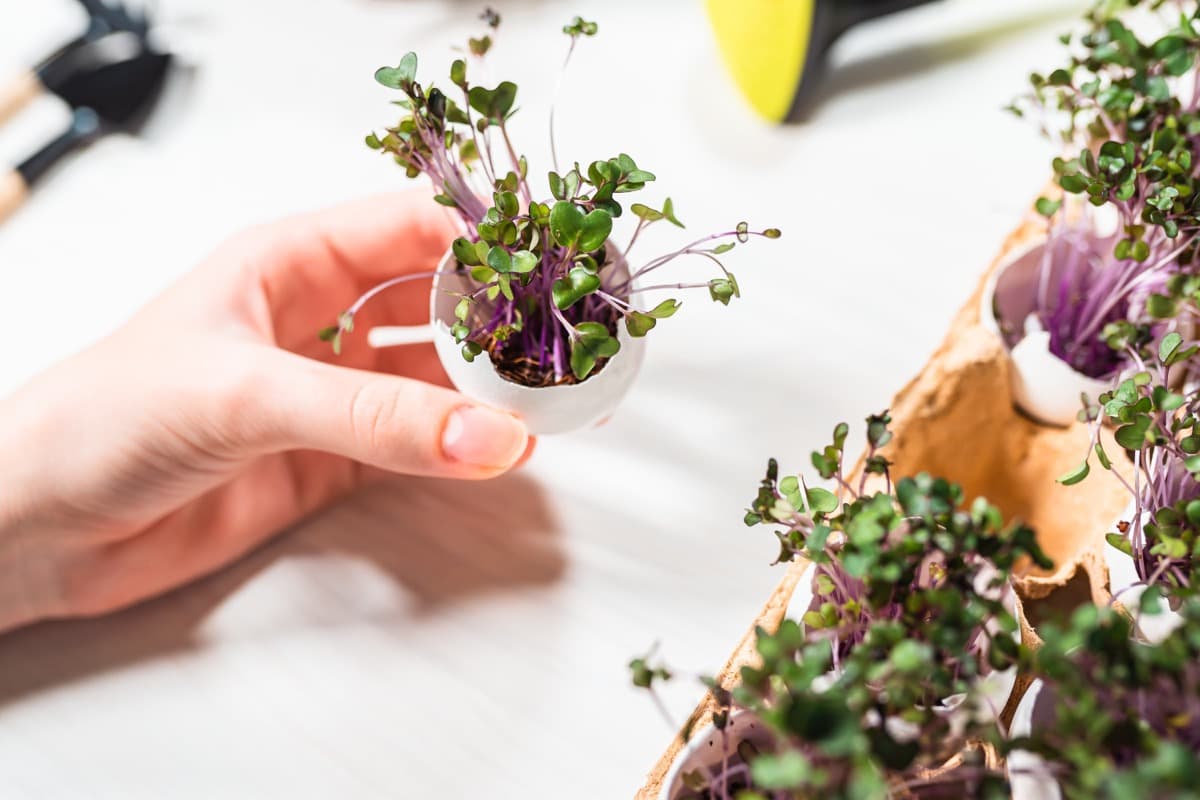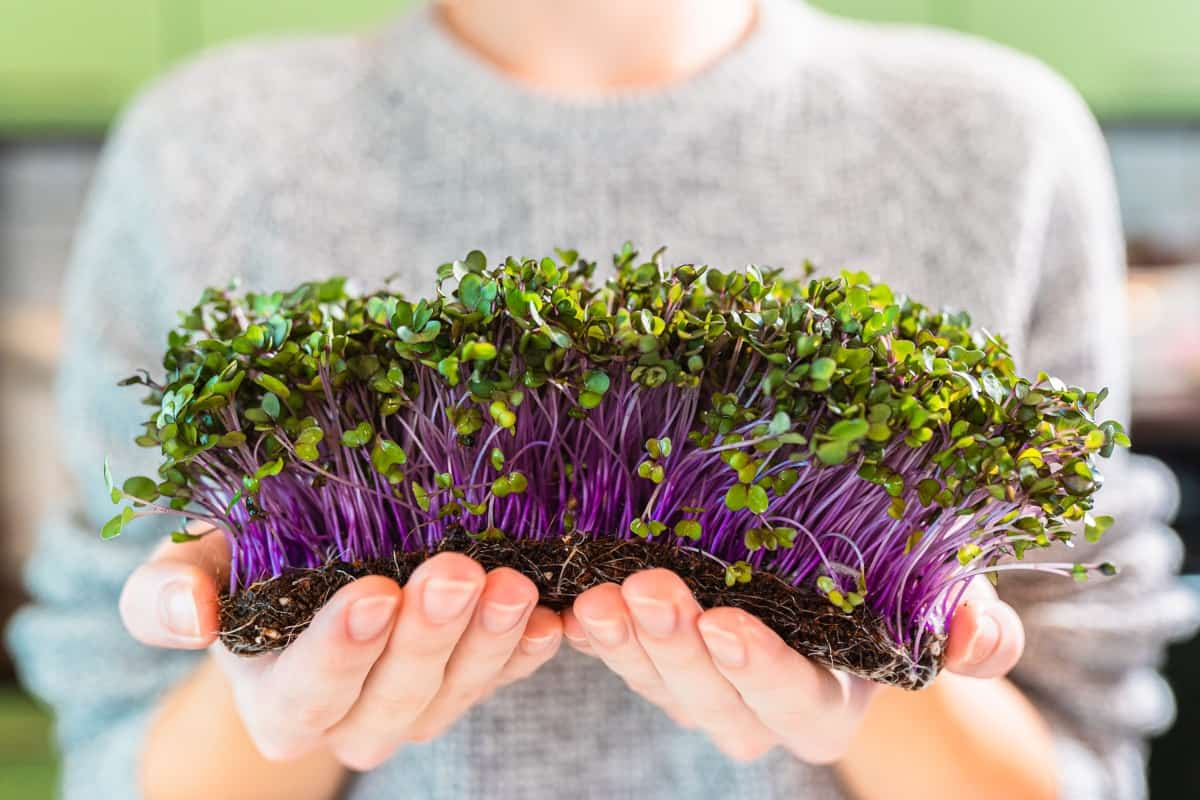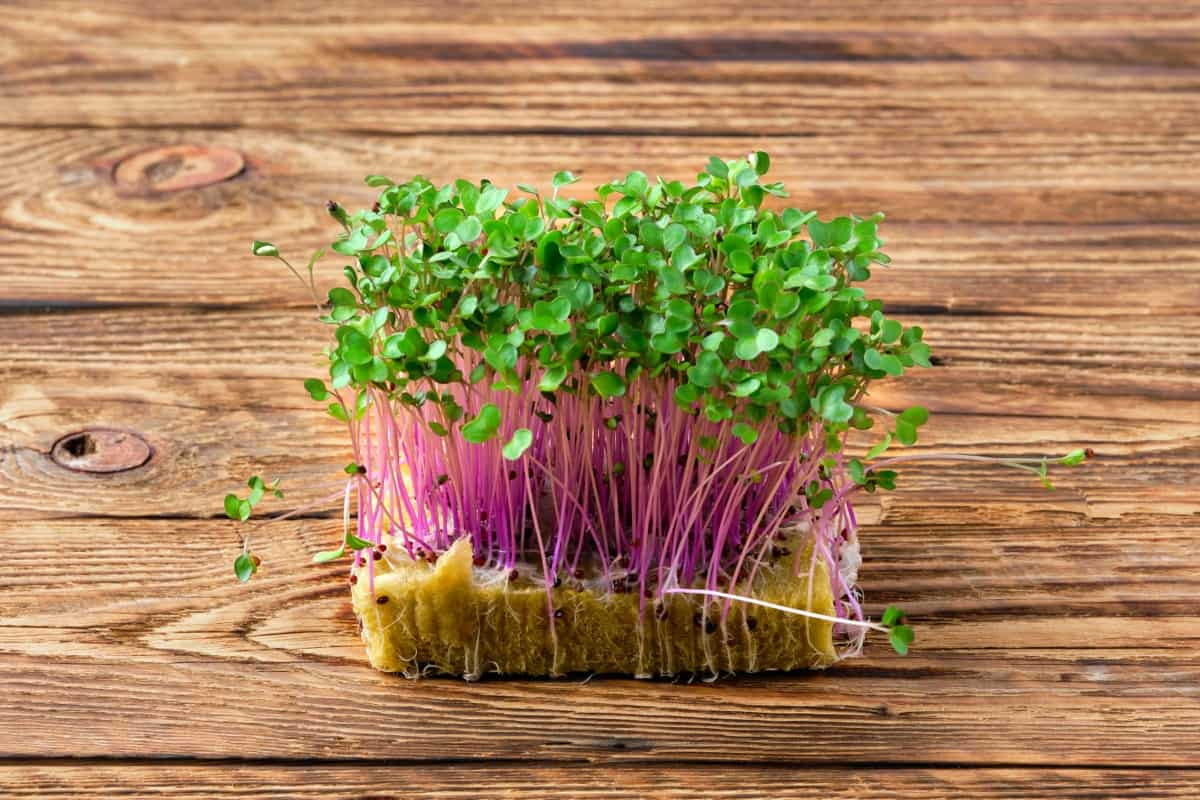Microgreens are easy-to-grow, nutrient-dense food that contains more nutrients than the same leaves from mature plants. Kohlrabi microgreens are a great way to add a little bit of flavor and nutrition to your diet. They’re easy to grow and require very little space, making them perfect for people who live in small apartments or homes.

A Step-by-Step Guide for Growing Kohlrabi Microgreens
What are Kohlrabi Microgreens?
Kohlrabi microgreens are Brassica oleracea, including Broccoli, Cabbage, and Brussels sprouts. It is a cool-weather crop usually planted in late spring or early summer. Kohlrabi microgreens are a great choice for those looking for a quick and easy way to add color and flavor to their garden, as well as some nutritious vitamins and minerals.
Why Grow Kohlrabi Microgreens?
- Kohlrabi microgreens are a nutrient-rich, flavorful addition to any dish. They are easy to grow in simple containers at home and only require a few weeks to mature.
- Kohlrabi microgreens are an excellent source of vitamins A, C, and K and other minerals.
Tips for Growing Kohlrabi Microgreens
- Fill your tray or container with potting or seed starting mix and moisten it with water.
- Sow the kohlrabi seeds thinly across the surface of the soil. Cover the seeds with another layer of potting mix or seed starting mix.
- Mist the soil lightly with water to moisten it. Start with high-quality kohlrabi seeds. Look for a variety tailored for microgreens, such as ‘Early White Vienna’ or ‘Green Glaze.’
- Soak the seeds overnight in water before planting. This will help them germinate more quickly.
- Plant the seeds in a shallow container filled with moistened potting mix or seed-starting mix.
- Place the container in a warm location out of direct sunlight. A windowsill or grow light works well. Keep the soil moist with water from a spray bottle.
What Container Should I Use for Growing Kohlrabi Microgreens?
When it comes to growing your kohlrabi microgreens, the type of container you use is important. You’ll want to ensure the container has drainage holes in the bottom so that excess water can drain and air can circulate. Otherwise, your kohlrabi microgreens may become waterlogged and rot. In terms of material, plastic or Styrofoam containers are generally best since they’re lightweight and won’t break if dropped. However, any container will work as long as it has drainage holes.
In case you missed it: A Step-by-Step Guide for Growing Kale Microgreens: DIY in Simple Way from Seeds in Containers

What Type of Soil is Best for Growing Kohlrabi Microgreens?
Many different types of soil can be used to grow kohlrabi microgreens. The best soil for growing kohlrabi microgreens is light, well-draining soil. A sandy loam or a potting mix would be ideal. The soil should be moist but not wet, and it should be able to hold onto moisture without being soggy.
When to Plant the Kohlrabi Microgreen Seeds?
Knowing when to plant the seeds is one of the most important steps in growing kohlrabi microgreens. The best time to plant kohlrabi microgreen seeds is in late spring or early summer after the last frost has passed. You can also sow the seeds indoors about six weeks before the last frost date in your area.
If you’re growing kohlrabi microgreens indoors, start them in a seed tray or pot filled with moistened potting mix. Sow the seeds thinly, and press them lightly into the soil. Water the soil gently, being careful not to drown the seeds. Place the seed tray or pot in a warm place, and keep the soil moist.
Once they’ve germinated, thin out the seedlings so that only one or two plants are left per cell or pot, keep growing them indoors, and then transplant them outdoors into individual pots or a garden bed. If you’re planting kohlrabi microgreens outdoors, sow the seeds in rows about 30cm apart. Thin out the seedlings so that there’s one plant every 10 cm. When they’re big enough to handle, transplant them into individual pots or a garden bed.
How Often to Water the Kohlrabi Microgreens?
- Watering microgreens is a delicate balance. Too much water and the microgreens will rot; too little water will wilt and dry out. Feel the soil is the best way to know if your microgreens need water.
- For most varieties of microgreens, you’ll need to water once or twice a day. Water early in the day so the leaves have time to dry before nightfall. This will help prevent diseases from developing. If you’re growing microgreens in a container with drainage holes, do not over-water them. Allow the excess water to drain out of the bottom of the container after each watering.
Steps for Growing Kohlrabi Microgreens
- Choose a container at least 2 inches deep with good drainage. Fill the container with potting mix or seed-starting mix.
- Sow the seeds thinly, covering them with 1/4 inch of soil. Gently water the soil until it is moist but not soggy.
- Place the container in a bright location out of direct sunlight. Keep the soil moist by watering it when the top inch of the soil feels dry.
- Thin the seedlings when 3-4 inches tall, leaving only the strongest ones to grow.
- Harvest the microgreens when they are about 2-3 inches tall by snipping them off at the base with sharp scissors.
When Do the Kohlrabi Microgreens Need Fertilizer?
Kohlrabi microgreens don’t need a lot of fertilizer, but you should fertilize them every few weeks to keep them healthy. A simple way to fertilize them is to mix a little bit of liquid fertilizer into the water when you water them. You can also use a slow-release fertilizer that you mix into the soil before planting.
How to Harvest the Microgreens
When the kohlrabi microgreens are about 2-3 inches tall, they are ready to harvest. Use a knife or sharp scissors to cut the greens at the base, just above the soil line. Be sure to leave some of the stem and roots intact so the plant can regrow and be harvested again. After cutting, rinse the kohlrabi microgreens well with water to remove dirt or debris. If you are not planning on eating the microgreens right away, they can be stored in a plastic bag or container in the refrigerator for up to a week.
In case you missed it: A Step-By-Step Guide for Growing Wheatgrass Microgreens: DIY in Simple Way from Seeds in Containers

Conclusion
Growing kohlrabi microgreens is a great way to add fresh, nutritious vegetables. Also, it’s an easy and inexpensive way to grow food in your home. Kohlrabi is a cool-season vegetable that can be grown in various climates.
- Feed Your Flock for Less: Top 10 Tips to Save on Chicken Feed
- Ultimate Guide to Ossabaw Island Hog: Breeding, Raising, Diet, and Care
- Hatching Answers: The Top 10 Reasons Your Chickens Aren’t Laying Eggs
- Eggs and Economics: Breaking Down the Cost of Raising Backyard Chickens
- Defend Your Greens: Proven Methods to Keep Iguanas Out of Your Garden
- Ultimate Guide to Cinnamon Queen Chicken: A Comprehensive Guide for Beginners
- Ultimate Guide to California Tan Chicken: Breeding, Raising, Diet, Egg-Production and Care
- Ultimate Guide to Marsh Daisy Chicken: Breeding, Raising, Diet, and Care
- 10 Types of Chicken Farming Businesses You Can Start for Profits